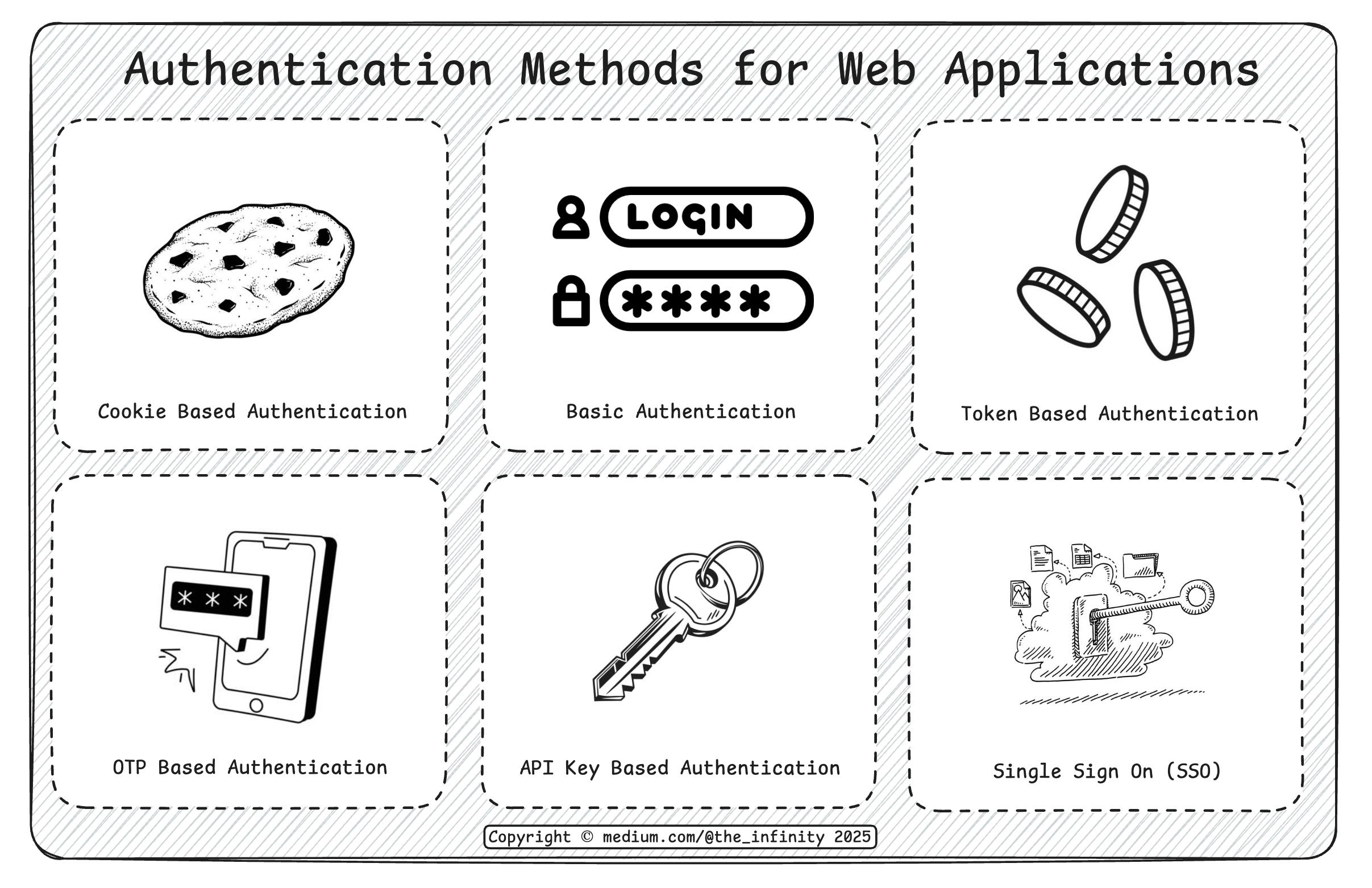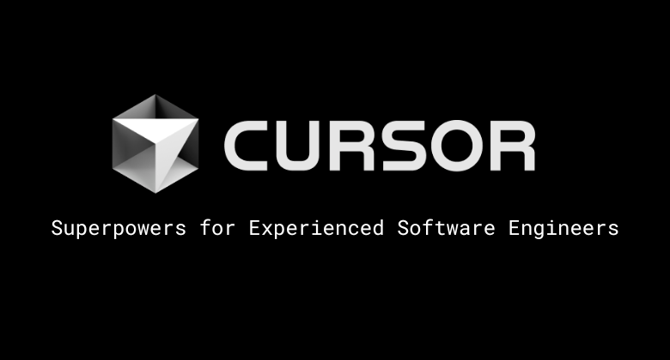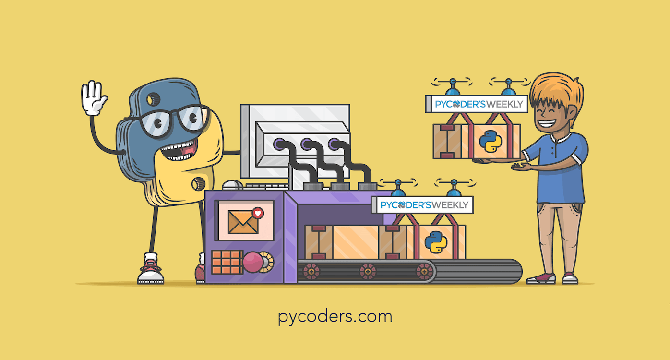Programming News
The Pragmatic Engineer
59

Image Credit: The Pragmatic Engineer
Being an “Intrapreneur” as a software engineer
- To thrive as a software engineer in today's tech market, developing intrapreneurial skills can be invaluable.
- Intrapreneurship, a combination of internal and entrepreneurial skills, involves running towards problems, taking ownership, investing in relationships, and more.
- Chaitali Narla, a seasoned engineering executive, highlights seven habits of successful intrapreneurs.
- These habits include running towards problems, taking end-to-end ownership, investing in cross-functional relationships, seeking sponsorships, making impact visible, not fearing rejection, and being proactive in all aspects.
- Developing these skills can lead to career success within a company, prepare for new opportunities, or even launch a startup in the future.
- Chaitali Narla shares her journey from an intern to director at Google, emphasizing the importance of intrapreneurial leadership.
- She provides practical examples from her experience, like addressing inefficiencies in data seeding and streamlining project setup processes.
- The article also touches upon the significance of cross-functional relationships, translating technical aspects for non-engineering stakeholders, and building networks proactively.
- It stresses the need for gaining sponsorships not just for promotions but also for overall career growth and advancement.
- Overall, the article encourages software engineers to cultivate intrapreneurial skills to navigate the competitive tech market successfully.
Read Full Article
Like
Dev
266

Image Credit: Dev
Exploring Firestore with Micronaut and Java 21: A Scalable NoSQL Solution for Modern Applications
- Choosing data storage for microservices is crucial; NoSQL can be more scalable in serverless environments.
- Google Cloud Firestore is explored as a serverless NoSQL database for modern applications, particularly AI and ML workloads.
- Firestore integrates well with tools like LangChain and LlamaIndex for various patterns like document loaders and vector stores.
- Firestore simplifies integration with AI services, enabling features such as automated embedding generation and image classification.
- Using Firestore with Micronaut and Java 21 for server-side development is detailed in the article.
- Setting up the project, client libraries, and configuring Firestore client are essential steps in working with Firestore.
- Code examples for creating a Firestore controller, validating feedback requests, and writing data to Firestore are provided.
- Firestore is highlighted as a great choice for scalable, AI-powered microservices in a serverless environment.
- The article emphasizes focusing on business value rather than infrastructure management with Firestore and Micronaut.
- Firestore with its scalability and integration with Micronaut simplifies building serverless, AI-powered applications.
Read Full Article
16 Likes
Medium
371

Image Credit: Medium
Why Logos Are Getting Boring
- Logos in the marketing world are increasingly losing their personality and being simplified.
- Visual identity encompasses more than just a logo, including colors, fonts, website designs, and image styles.
- Large corporations have detailed brand manuals dictating how every visual element should be presented.
- There is a trend in logos towards simplification as companies aim for a more streamlined and minimalist look.
- This trend is driven by a desire for uniformity and consistency across various platforms and marketing channels.
- Logos are being stripped down to their essential elements as part of this simplification process.
- The concept of visual identity is often misunderstood by those outside the design field.
- Small businesses might only require a logo and a few brand colors, while larger corporations have more complex visual branding requirements.
- The battle for simplification in logos is a widespread phenomenon across the industry.
- The shift towards minimalism in logo design is driven by the need for a cohesive brand image across different mediums.
- Visual identity plays a crucial role in defining what a company stands for.
- Logos form just one part of a brand's overall visual identity.
- The quality of logos in marketing is perceived to be declining as they become more generic and stripped of individuality.
- There is a push for logos to be more streamlined and simplified across the board.
- The changing landscape of logos reflects a broader trend towards minimalist and clean design aesthetics in branding.
Read Full Article
22 Likes
Dev
170

Image Credit: Dev
What is git? and what is .yml file
- Git is a distributed version control system that allows users to work with complete repositories locally and then sync them with a server.
- Version control systems track and manage changes to software code, helping software teams manage code changes over time.
- GitHub is a popular version control platform known for its extensive marketplace of third-party integrations, while GitLab remains open source with a smaller integration selection.
- GitHub's popularity increased after being acquired by Microsoft in 2018, leading to promotions and improved features.
- A .yml file, or YAML file, is a human-readable data serialization format commonly used for configuration files and data exchange.
- YAML stands for "YAML Ain't Markup Language" and is used for writing configuration files.
- Other version control systems include Subversion (SVN), Mercurial, and Perforce.
Read Full Article
10 Likes
Discover more
- Software News
- Web Design
- Devops News
- Open Source News
- Databases
- Cloud News
- Product Management News
- Operating Systems News
- Agile Methodology News
- Computer Engineering
- Startup News
- Cryptocurrency News
- Technology News
- Blockchain News
- Data Science News
- AR News
- Apple News
- Cyber Security News
- Leadership News
- Gaming News
- Automobiles News
Dev
161

Image Credit: Dev
Why I Used Goose to Build a Chaotic Emotion Detection App
- The writer tapped into their inner child and used Goose to build a UI that reacts to users' emotions.
- AI agents and vibe coding have rekindled the joy of programming, making problem-solving more creative.
- A livestream series called The Great Goose Off celebrates joyful programming by creating silly and chaotic apps.
- Experimenting with technology can help solve problems creatively.
- Using Goose as a creative partner, the writer built a computer vision app that detects and responds to emotions.
- Participants of The Great Goose Off gave open-ended prompts, resulting in imaginative and unpredictable outputs.
- Choosing a performant model like Claude Sonnet 4 helped in handling errors and code documentation efficiently.
- Prompt chaining involved breaking complex tasks into smaller, sequential subtasks for better implementation.
- Version control and an iterative approach allowed for testing functionality incrementally and refining the app's behavior.
- The writer, along with Goose, created an application where the interface reacts to facial expressions in playful ways.
- Having fun and building for joy rather than just utility is encouraged to maintain passion in the industry.
Read Full Article
9 Likes
Medium
258
Image Credit: Medium
The Road to Becoming a Python 10x Engineer
- Python is a popular programming language known for its ease of use and versatility.
- While Python allows for quick code bootstrapping and is often used for proof-of-concepts and machine learning, maintaining Python code can be challenging due to its lack of static typing.
- An example code snippet is provided to illustrate how readability and understanding can be improved by implementing type hints and classes in Python.
- Type hints, indicated by adding a ":" followed by the type of an object, provide context and make code more explicit.
- By incorporating type hints, the code becomes more readable and easier to work with, especially when dealing with AI libraries.
- Classes, which are traditionally used in object-oriented languages, are now available in Python and can improve modularity and readability of the code.
- By introducing classes, the code becomes more structured and reusable, enhancing its readability and maintainability.
- Implementing type hints and classes in Python code can elevate it to be more maintainable, scalable, and easily comprehensible without the need for extensive documentation.
Read Full Article
15 Likes
Mit
336

Image Credit: Mit
Combining technology, education, and human connection to improve online learning
- Caitlin Morris, an architect, artist, researcher, and educator, combines technology, education, and human connection to enhance digital learning platforms.
- Growing up in rural New York, she learned practical skills early and taught herself to code through community-oriented platforms.
- Morris emphasizes the importance of social interaction for motivation and curiosity in learning.
- Engaged in various community-based learning activities, she organizes events, leads meetups, and contributes to open-source software development.
- Her research at the MIT Media Lab focuses on social interaction and emotional gaps in online and AI-assisted learning.
- Morris aims to develop AI-driven tools to enhance social curiosity and intrinsic motivation in digital learning environments.
- As a MAD Fellow, she aligns with the program's goal of fostering creativity, critical thinking, and collaboration in non-traditional education approaches.
- Her work involves creating interactive art installations that immerse visitors in experiences inspired by nature.
- Morris also teaches design, coding, and technology at various educational levels, emphasizing non-traditional learning methods.
- Her doctoral research seeks to bridge the gap between efficient digital learning platforms and the social interaction present in effective in-person learning environments.
Read Full Article
20 Likes
Mjtsai
209

Foundation Models Framework
- Apple is introducing the Foundation Models framework to allow app developers to tap into the on-device model at the core of Apple Intelligence.
- App developers can use the framework to create intelligent experiences for users that are offline, privacy-preserving, and cost-free.
- The Foundation Models framework offers native support for Swift and easy access to Apple Intelligence models with minimal code.
- Developers and users are impressed with the capabilities and performance of the on-device model, with positive feedback on the structured results it generates.
- The Foundation Models framework is seen as a significant development, potentially revolutionizing AI capabilities in apps and leveraging Apple's developer base.
- Some concerns were raised about the model's limitations on older devices and its quantization to 2 bits in macOS 26.
- There are discussions about how Foundation Models could impact AI development and app functionalities, with users experimenting with its features.
Read Full Article
12 Likes
Hackernoon
69

Image Credit: Hackernoon
6 Login Methods Every Developer Should Know
- Authentication methods like Basic Auth, Cookies, Tokens, API Keys, OTP, and SSO serve specific purposes with varying levels of security and usability.
- Basic Authentication, the oldest method, is simple but insecure due to vulnerabilities like man-in-the-middle attacks and lack of server-side logout.
- Cookie-Based Authentication enhances security with features like server-side logout but requires server-side session management and may not scale well.
- Token-Based Authentication provides a stateless, scalable solution with JWT being a popular choice, although securely storing tokens is crucial.
- API Key-Based Authentication is used for accessing APIs, offering simple access control and monitoring for billing, analytics, and security.
- OTP-Based Authentication adds security through unique, time-sensitive codes transmitted via trusted channels, reducing risks like phishing.
- SSO enables users to log in once and access multiple services without repeated logins, streamlining authentication across various systems.
- Each method has its pros and cons in terms of security, scalability, and usability, catering to different use cases and security requirements.
- These authentication methods play crucial roles in web app development, offering a range of options to verify and secure user identities efficiently.
- Understanding these authentication methods is essential for developers to implement robust and secure login systems in their web applications.
- The blog covers Basic Auth, Cookies, Tokens, API Keys, OTP, and SSO authentication methods, detailing their mechanisms and applications.
Read Full Article
4 Likes
Dev
69

Image Credit: Dev
You’ve got Chat instead of a brain: how AI is messing up junior developers
- The article discusses the impact of AI on junior developers in the IT industry, highlighting the reliance on AI tools like ChatGPT for coding assistance.
- It raises concerns about developers using AI-generated content without truly understanding the code they produce, leading to a lack of knowledge and critical thinking.
- The author emphasizes the negative consequences of overdependence on AI, such as a decline in fundamental coding skills and comprehension of software systems.
- Issues like mental shutdown, lack of base knowledge in coding, and reliance on AI hints are explored, emphasizing the importance of genuine understanding in programming.
- AI-generated code is shown to potentially lack security measures and proper context, posing risks in terms of compliance, architecture, and threat models.
- The article also touches on legal implications of using AI-generated code with unclear licensing and the significance of understanding software licensing in development.
- There's a shift in hiring trends towards candidates with strong architectural thinking, security knowledge, and a critical approach to AI-generated code output.
- Advice is given to use AI tools wisely as aids for automation and exploration, while still focusing on learning coding fundamentals and problem-solving skills.
- The importance of clear thinking, logical reasoning, and genuine coding skills is highlighted as essential for developers, even in the age of advanced AI.
- Junior developers are encouraged to treat AI as a companion tool, not a replacement for coding knowledge, critical thinking, and understanding of algorithms.
- Ultimately, the article urges developers to prioritize learning, genuine comprehension, and manual debugging to excel in the evolving tech industry.
Read Full Article
4 Likes
Medium
345

Image Credit: Medium
Unlocking Developer Superpowers with Cursor
- Cursor is an AI-powered code editor that has transformed how developers work.
- While Cursor can be fast and confident, it may also provide incorrect outputs that require manual cleanup.
- The editor's agent mode can refactor code effectively, but may sometimes cause issues like endless looping.
- Cursor can suggest changes that might break core business logic, highlighting the importance of developer oversight.
- Experience plays a crucial role in utilizing Cursor efficiently and distinguishing good output from bad.
- Using Cursor can accelerate the development process by letting developers quickly spot and correct AI errors.
- The tool amplifies developers' skills but doesn't replace them, focusing on speeding up development and maintaining code quality.
- While AI is evolving, completely replacing programmers is seen as unlikely, with claims of such transformations being viewed skeptically.
- AI tools like Cursor are viewed as collaborators that enhance developers' capabilities rather than taking over their work entirely.
- It is emphasized that developers should continue to learn programming fundamentals and leverage AI to increase productivity.
- The future of software development is envisioned as a collaboration between humans and AI tools, offering improved efficiency in solving complex problems.
Read Full Article
20 Likes
Medium
258

Juris.JS: Why Framework Haters Will Love Juris objectToHtml() API
- Juris introduces the objectToHtml() API as a solution for both framework lovers and haters.
- It aims to provide a declarative UI approach without the complexities of traditional frameworks.
- ObjectToHtml() API enables developers to work with JavaScript objects that directly translate into DOM elements.
- Juris requires no JSX compilation, virtual DOM, or framework runtime, offering a streamlined developer experience.
- Framework haters appreciate the transparency and control provided by Juris, allowing direct inspection and manipulation of DOM elements.
- The API offers enhanced DOM manipulation without ecosystem lock-in or prescribed methodologies.
- Performance-conscious developers value Juris for its optimal DOM operations, eliminating virtual DOM overhead and reconciliation.
- LLMs can utilize Juris to generate object structures reliably, addressing a common concern among framework detractors.
- Developers can easily migrate from vanilla JS to Juris for a more declarative structure with less imperative DOM code.
- The objectToHtml() API satisfies the desires of framework haters while delivering modern developer experience benefits.
- Juris enables the creation of a responsive and styled dashboard component with minimal framework dependencies.
- By focusing on platform purity and simplicity, Juris aims to bridge the gap between traditional frameworks and vanilla JS.
- The API emphasizes lightweight, composable UI code that aligns with platform-native standards, catering to developers seeking better APIs.
- Juris signifies a shift towards better APIs over larger frameworks, emphasizing the importance of working alongside the platform.
- It offers a blend of modern developer experience and platform-native development through JavaScript objects.
- The future of web development, as showcased by Juris, revolves around clear, lightweight APIs that enhance developer productivity.
- Juris's objectToHtml() API marks a significant advancement in web development by promoting simplicity and efficiency over unnecessary complexity.
Read Full Article
15 Likes
PlanetPython
398

Image Credit: PlanetPython
PyCoder���s Weekly: Issue #686: Free-Threaded Update, GPU Programming, GitHub Actions, and More (June 17, 2025)
- Python Language Summit 2025 provides an update on free-threaded Python.
- Talk Python discusses GPU Programming in Pure Python with Bryce Adelstein Lelbach.
- A blog presents a mental model to build relationships with AI agents.
- GitHub Actions aid in Continuous Integration and Deployment for agile methodologies.
- NumPy v2.3.0 has been released on GitHub.
- Django Software Foundation seeks Django Fellow applicants.
- Updates on Django bugfix releases and Python 3.13.5 release.
- scikit-learn 1.7 release announcement is made.
- Overview of Python jobs available in different locations.
- Articles cover topics such as unused keys in a dictionary, Django management commands, and structuring Python scripts.
- New projects and libraries like GenAI, pointblank, and py-shiny are highlighted.
- Events like PyData Bristol Meetup and Python Nordeste 2025 are scheduled.
Read Full Article
23 Likes
Medium
375
Image Credit: Medium
Could MCP Servers and AI Be the Quiet Combo Powering the Future of Apps?
- MCP servers, short for Multi-Channel Processing or Modular Computing Platform, handle various data streams and tasks simultaneously, offering a modular setup for developers.
- The flexibility of MCP servers can revolutionize app development, especially with complex applications demanding more computing power.
- Both hardware and software components play crucial roles in the efficiency of MCP servers, focusing on orchestration and task management.
- Artificial Intelligence (AI) is integrated into MCP servers to optimize workloads, contributing significantly to their performance.
Read Full Article
7 Likes
Dev
429

Image Credit: Dev
🚀How the V8 JavaScript Engine Runs and Optimizes Your Code
- The V8 JavaScript engine by Google powers JavaScript applications like Chrome browsers and Node.js.
- V8 compiles JavaScript code directly into native machine code for fast performance.
- V8 uses a compilation pipeline that can optimize JavaScript code similar to compiled languages.
- The V8 engine architecture includes components like Parser, AST, Ignition, TurboFan, and Machine Code.
- Each stage in the V8 pipeline contributes to maximum performance through optimization.
- Understanding V8's processes is crucial for writing efficient JavaScript applications.
Read Full Article
25 Likes
For uninterrupted reading, download the app